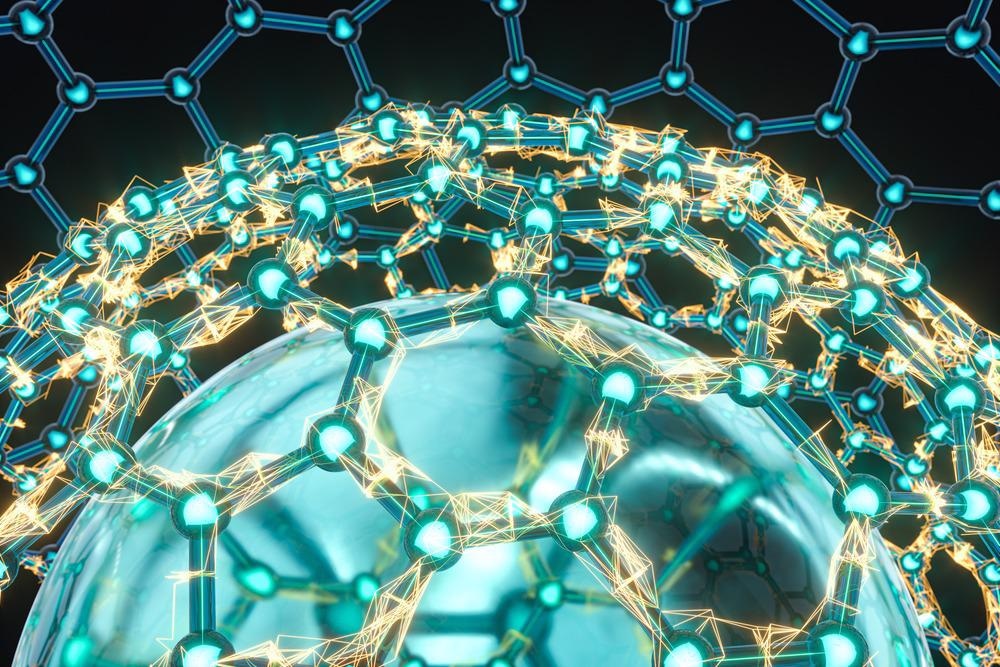Nanofluidics enables the detection of compounds at the smallest concentration. It studies the behavior and manipulation of fluids confined in structures of 1-1000 nm scale. Scientists revealed that the overall detection process has improved with the advancements in label-free detections in nanofluidics, mainly in biological and chemical analysis. The present article focuses on the label-free characterization of biomolecules using nanofluidics.

Image Credit: Vink Fan/Shutterstock.com
Advancements in fluidic control techniques and nanofabrication have led to the emergence of nanofluidic devices for biomolecule analysis. Over the years, improvements in nanofluidic device configurations, such as nanoporous membranes, nanopores, nanogaps, nanocavities, and nanopipettes, have been reported. These advancements have enabled scientists to process the denatured DNA molecules in nanofluidic channels while engineering single DNA molecules.
What is the Need for Label-Free Characterization Techniques?
One of the challenges faced by scientists in nanofluidics studies is the extremely low number of detected molecules in a nanofluidic channel. Typically, the detection of biomolecules in nanofluidics-based laser-induced fluorescence microscopy possesses single-molecule sensitivity. This process has several disadvantages.
One of the key disadvantages involved in the labeling of biomolecules with fluorescing tags includes its separation from unbound dyes. Other limitations involve interference of fluorescence signals (photobleaching), changes in electrophoretic mobility, and unsuitable quantitative response. Additionally, low labeling efficiency hampers the detection of a single biomolecule or quantifying biomolecules in nanofluidic channels.
Label-Free Characterization of Biomolecules in Nanofluidics
Label-free detection methods in nanofluidics have been categorized into optical and electrical methods. These methods are discussed below:
Optical Detection Methods:
Typically, detection of molecules in nanofluidic devices via conventional optical methods is challenging. This is basically because of the short optical path lengths. In a nanochannel, the optical path length is one-millionth of that used in a general optical cell linked to conventional absorbance measurements.
Some strategies used to detect optical signals emitted from a limited number of label-free biomolecules in a nanofluidic channel are diffraction/scattering or differential interference contrast (DIC) techniques and strategies associated with an increment of light-matter interactions (temporal or spatial) using plasmonic and photonic structures.
Scientists used nanofluidic grating to identify the changes in refractive index and the real-time monitoring of DNA amplification. They have designed a device that could also be integrated into a smartphone-based biosensing system to detect and compare the results with reference nanochannels for directly calculating the refractive index.
Recently, a scattering of the light-based detection system in nanochannels has been used to detect single, label-free protein molecules. This technique successfully determined the presence of viruses in a nanochannel. Increased light-matter interactions could overcome the shortcoming associated with reduced optical path lengths in nanofluidic devices. Scientists reported that integrating plasmonic or photonic structures in nanofluidic channels has substantially improved the detection performance.
Refractive index (RI) sensors can identify small changes in RI due to the presence of analytes on the sensing surface. Some nanofluidic devices, based on photonic structures, such as nanohole-array-based photonic crystals (PhCs), Fabry–Pérot (FP) cavities, and plasmonic nanoholes, exploit the simultaneous detention of photon energy and molecules present within a nanochannel.
Raman spectroscopies and infrared (IR) absorption spectroscopies provide essential information associated with molecular bonds and chemical structures in a label-free and non-invasive manner.
Surface-Enhanced Raman Spectroscopies (SERS) were applied in nanofluidic devices to improve the mass transport of biomolecules. This nanofluidic technique has been used to detect all four DNA nucleobases in a single DNA molecule.
Electrical Detection Methods:
Although electrical detection methods are used as an effective label-free detection of biomolecules, the small size of the nanochannel poses difficulty owing to the large impedance of liquid in the nanochannel.
One of the standard conductive-based detection methods is resistive pulse sensing using nanopores, which is associated with measuring the change of electric current when biomolecules flow through nanopores.
Scientists have used the resistive pulse sensing method to differentiate different structures of proteins owing to their conformational changes. Additionally, lysozyme was also identified using a nanopore with a diameter of around 21 nm. Importantly, translocation of DNA was detected using a nanopore of diameter around 5 nm located at the center of a graphene nanoribbon.
In this method, researchers measured resistive modulations of in-plane current generated as a result of DNA translocation. This method was also used to detect aggregated proteins by measuring the current change of the proteins when transited specifically sized nanopores.
Several biomolecules have been detected by measuring the changes in conductivity in the nanochannel, for example, bovine serum albumin, cardiac troponin T, microRNA, DNA, and trypsin. Another label-free nanofluidic method used to detect biomolecules like DNA is estimating electro-osmotic flow (EOF). One of the electrical-based detection methods involves measuring the streaming current signal at pico-ampere order in the nanochannels. Recently, researchers have developed a bionanofluidic sensor using a nanochannel in the different reaction schemes.
Future Perspectives
In the future, scientists aim to focus on developing new nanofluidic devices, primarily, formulating label-free techniques for detecting different chemical and biological molecules. In the next decade, new nanofluidic-based analytical tools will be developed for biomedical and biochemical research.
References and Future Readings
Špačková, B. et al. (2022) Label-free nanofluidic scattering microscopy of size and mass of single diffusing molecules and nanoparticles. Nature Methods, 19, pp. 751–758. https://doi.org/10.1038/s41592-022-01491-6
Zhao, Y. et al. (2022) Label-Free Optical Analysis of Biomolecules in Solid-State Nanopores: Toward Single-Molecule Protein Sequencing. ACS Photonics. 9(3), pp. 730-742. DOI: 10.1021/acsphotonics.1c01825.
Le, T. et al. (2020) Advances in Label-Free Detections for Nanofluidic Analytical Devices. Micromachines, 11(10), 885. https://doi.org/10.3390/mi11100885
Spackova, B. et al. (2020) Nanofluidic label-free single biomolecule detection (Conference Presentation). Proc. SPIE 11254, Nanoscale Imaging, Sensing, and Actuation for Biomedical Applications XVII, 112540O. https://doi.org/10.1117/12.2544736
Duan, C. et al. (2013) Review article: Fabrication of nanofluidic devices. Biomicrofluidics, 7, 026501. https://doi.org/10.1063/1.4794973
Disclaimer: The views expressed here are those of the author expressed in their private capacity and do not necessarily represent the views of AZoM.com Limited T/A AZoNetwork the owner and operator of this website. This disclaimer forms part of the Terms and conditions of use of this website.